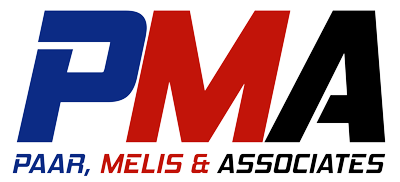When it comes to running an auto repair shop, accurate tracking of labor costs isn’t just a numbers game—it’s the backbone of a profitable business. In our latest podcast episode, Hunt Demarest, CPA, from Paar Melis & Associates, explains why your shop management system may be reporting technician costs that are far from the real payroll expenses you’re incurring. If you’ve ever been frustrated by the gap between what you actually pay your techs and what your system shows, you’re not alone.
Understanding the Discrepancy
Most shop management software is designed to streamline operations but often falls short when it comes to reflecting true labor costs. Hunt points out that nearly 90% of technicians are mislabeled in these systems. Whether your techs are paid hourly, salary, commission, or flat rate, the software tends to assume a flat rate model. This means that if your shop’s productivity doesn’t match that flat rate, you could be significantly underestimating your labor expenses.
Consider an hourly technician: if you pay them $20 per hour for a 40-hour week, your payroll expense is around $800 (plus taxes and benefits). However, if the system only logs the hours when work is billed, it might only reflect a fraction of that cost. Over time, this discrepancy can distort your profit margins, giving you a false sense of profitability.
The Impact on Profitability
Imagine the scenario: you’re celebrating a strong week based on the numbers from your shop management system, only to later discover that your actual profit is nearly half of what you expected. This isn’t just a minor accounting error—it’s a systemic issue that affects budgeting, planning, and ultimately, the financial health of your business. Hunt emphasizes that having an inflated sense of profit can lead to complacency and misinformed decisions regarding staffing, spending, and pricing strategies.
Three Approaches to Correcting the Issue
Hunt outlines three methodologies to help shop owners reconcile the differences between reported and actual labor costs:
-
Rule-of-Thumb Method:
If you’re not sure of your exact technician productivity, start with a simple multiplier. For example, if you believe your techs are 50% productive, multiply the shop management software’s labor cost by 2 (or 2.25 to be conservative). This basic adjustment can provide a rough but useful estimate of true costs. -
Team-Wide Adjustment:
For those who prefer a middle-ground approach, take your total actual payroll cost over a given period (say 90 days) and divide it by the system’s reported total. This ratio gives you a multiplier that can be applied across all technician rates in the system. Hunt’s example showed a multiplier of 1.25, which he then adjusted to 1.3 or 1.4 to ensure he stayed on the safe side. -
Individual Technician Analysis:
In more volatile shops or larger operations, a one-size-fits-all multiplier may not be sufficient. Instead, analyze the payroll for each technician separately. This advanced approach allows you to fine-tune adjustments based on each tech’s productivity, ensuring that the system’s data is as close to reality as possible. While this method requires more effort, it can significantly improve your accuracy and profitability.
Best Practices for Ongoing Accuracy
Once you’ve applied your chosen adjustment method, it’s crucial to monitor the results. Hunt advises shop owners to revisit these calculations regularly—whether monthly or quarterly—especially if your shop experiences significant fluctuations in production or staffing changes. Consistency in tracking and adjusting your labor costs is key to long-term financial success.
Another important tip from Hunt: always round up your estimates. Being conservative in your calculations ensures that when your actual profits exceed your expectations, it’s a pleasant surprise rather than a budgeting setback. This conservative approach also helps build trust with your team, as you can confidently set profit targets and celebrate when you exceed them.
Conclusion
Aligning your shop management system’s technician cost data with your actual payroll is not just about correcting an error—it’s about gaining true visibility into your shop’s financial performance. By taking the time to adjust these numbers, you set the stage for more informed decision-making, improved profitability, and a healthier bottom line. Whether you opt for a simple rule-of-thumb method or a detailed, technician-by-technician analysis, the effort you put in now will pay off in the long run.
Take control of your shop’s financial health today. Review your technician cost data, apply the necessary multipliers, and watch as your business performance becomes clearer—and your profits, even bigger.

